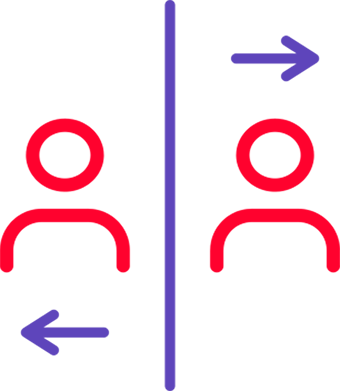1. Demographics
The outward-facing attributes of a person e.g. age, gender, marital status.
In today’s rapidly changing world, it is more challenging than ever to anticipate and meet the needs, expectations and behaviours of customers. As a small/medium sized business, you may already have the advantage of a personal relationship with your customers.
But taking the step to formally analyse your customer base can drastically improve results for every size of business. Did you know that more than half of UK consumers feel more loyal to brands that show a deep understanding of their preferences and priorities? (Qualtrics, 2019)
1. The Gathering
Roundup as much data about your customers as you can! You may already have existing information from current customers e.g. on your database - great starting point. But also try distributing a customer survey, using sites like Survey Monkey or Type Form to get a fresh outlook. Online insight tools are handy for assessing incoming website traffic and behaviour.
Google Analytics is a popular free insight tool, which tracks and reports traffic to your website. If your business already has a profile on Facebook or Twitter, these sites also have their own free inbuilt analytics services. YouGov Profiles is great for all your customer planning needs, it provides a snapshot of the typical audience for a “brand, service or product” etc. Profiles Lite is free and a good place to start and like most of these tools, there is the option to upgrade at a cost to the full version of the platform.
Analyse the information you have found by trying to spot any patterns. Are there a cluster of customers who happen to share the same characteristics? If so, begin to group them accordingly.
Here are the four main ways you can categorise:
1. Demographics
The outward-facing attributes of a person e.g. age, gender, marital status.
3. Attitudinal
Have you discovered that most of your customers enjoy certain movie genres or lifestyle choices? Or have similar mindsets and beliefs?
2. Behavioural
Is there a similarity in actions taken, do your customers visit the same social sites or use the same devices?
4. Geographics
Whether it’s the same continent or postcode, do you find that a majority of your customers are based in a certain location?
You may realise that you have more than one customer type, that’s ok. Between 3-10 groups is the norm. Just make sure you name the different groups and begin to identify which will bring you the most value and will therefore be your main target group. You can determine this by ranking each group against these four factors:
1. Market size
How many people fall into each group? Is there one group that makes up the majority of your existing customer base?
3. Growth
What is the future growth potential of this group? Is the number of people in this group likely to increase with time or decrease?
2. Profitability
Are there a certain group of people less price sensitive and therefore willing to pay more for your offering?
4. Accessibility
How easy is it to get in front of this group of people? Is there already a flurry of competitors fighting over their attention?
3. Customer portraits
Stats alone don’t define a person. Understanding the human psyche is key. Try to put yourself in your customers’ shoes at every interaction stage with your business: do you know what brought each customer to your business?
Do you know what their bedroom décor would look like? Once you have identified your target group, the answers to these questions can help build a fictional but realistic profile or portrait of the average customer for your business.
The important bit is to decide how you will use the information you have gathered. You can use your new segment information to tailor your messaging or products so that it’s more appealing to your customers. Or maybe it could highlight a new untapped opportunity or an area where you can stop activity and therefore cut costs. For example, if you discovered a huge peak in online activity from your target customers between the hours of 7-10pm, you could schedule paid ads during this time window only, instead of paying for a full 24 hours.
Don’t forget to test how useful your customer segments are.
Are the groups you created sizeable enough to be worth targeting? Is each group distinguishable enough from each other? It is important to keep monitoring your insights and adjusting your strategies based on any new information. Nothing ever stays the same.
What do you think of the ThoughtHub? What else could we help you with? Let us know!
Give us your views



